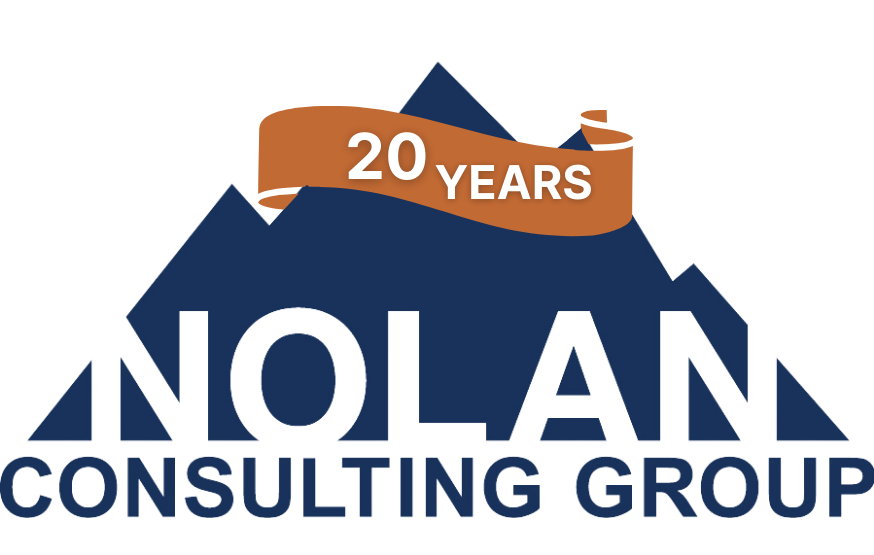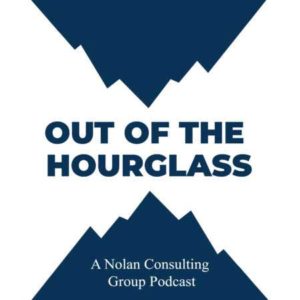Levels of Work – A Podcast Series
Rethink the way you approach building your teams and hiring.
Contributor: Molly Nolan, Marketing & Program Manager
If you want to grow your business, you need employees in the right roles. This in turn helps drive the business to the next level. The people in your organization are crucial to your business’ ability to DO MORE and we look at them with the expectation that they can do THE WORK. It’s only natural then that we want to promote people to be able to do more and grow their career! But why do some people fail when promoted? Some people succeed. Many often struggle. Why does that happen? We set out to explain the pattern through the concepts of Timespan and Levels of Work.
These ideas were researched and developed first by Elliot Jaques, a Canadian Social Scientist who researched successful organizations and authored the book, Requisite Organization. Tom Foster, a disciple of Elliot Jaques, who authored Hiring Talent and Outbound Air, has continued to expand on and apply Jaques’ work.
At Nolan Consulting Group, we value the work Jaques and Foster have done as it allows us to rethink the way we approach building our teams and hiring. Our goal is to dig into the concepts and help more people be aware of it.
Why is it important?
Timespan and Levels of Work have a great impact on how we interview, promote and develop position or role visions within the organizational chart. Understanding the concept of timespan and levels of work will help you to better match candidates to roles: who can vs. cannot accomplish the tasks of the role they are signing up to do by making the right kind of decisions in the right time-frame.
It gets rid of the traditional interview that often leaves us guessing or thinking, well it ‘sounds like’ this person is capable of the work. Instead, it creates a matching process. Match the decisions to the candidate! We used to think hiring is about guessing and firing is knowing — Not Anymore!
The first 3 Levels of Work that Elliot Jaques created breaks down the tasks we do in our role:
- The Doing – Tasks at hand
- The Coordinating – The prioritizing
- The Creating – The Managing and building of systems, schedule, etc.
How does this affect Role Vision?
Use job expectations as a way to understand and define the results, rather than just leaving it at the tasks — What are the KRAs (Key Result Areas) that we expect this person to be able to do or produce? This is where it relates to timespan.
“Timespan” — the length of time of “The Work” or “Task” is different for each role and different problems needed to solve. More complex problems require different skills and abilities- and more time to plan out or work through to solve. Easier problems require less time to plan and solve.
As it relates to time – How long you can leave someone alone to do “the tasks” is the measurement factor. The goal at the end of the day is to be able to increase the amount of time someone can work independently. The greater the timespan, the more likely the individual can accomplish more complex problems (levels 3+) on their own or work independently into the future.
| LEVEL | TASKS | Key Result Areas | Timespan – Into the Future |
| Level 3 | Developing the Systems and processes- Creating | Efficient, Consistent, Predictable | Months |
| Level 2 | Making sure the work gets done right – Coordinating | Accurate Complete, On time | Weeks |
| Level 1 | Doing the work- Doing | Quality | Days |
Now, how does this work in real life?
What kind of decisions fall into Level 1, 2 and 3? How can we apply Timespan and levels of work to your company’s structure and understand the people you have in those roles? How can you help people grow in their timespan capabilities and “level up?”
Over the last few weeks, Nolan Consulting Group Coaches’ Andrew Amrhein & Kathryn Freeman have been discussing these concepts on our podcast channel, Out of the Hourglass. Through their Levels of Work Series, Andrew & Kathryn are delving into each Level – focusing on the timespan, the role specifics, how to recognize it in the interview process and tangible material, like Position(Role) Vision’s to take away and apply to your organization.
Levels of Work Series: Episode 1 – Introduction & Level 1
Levels of Work Series: Episode 2 – Level 2
** Out of the Hourglass podcasts can be found wherever you listen to podcasts! Apple, Spotify, Google, Amazon & more!
Episodes 3 & 4 to be released through March!
We encourage you to listen and relate the examples used to explain the concepts to your own organization. Have questions or thoughts on the concepts, we would love to hear from you! We would also highly recommend Tom Foster’s Management blog for further learning!
All the best,


